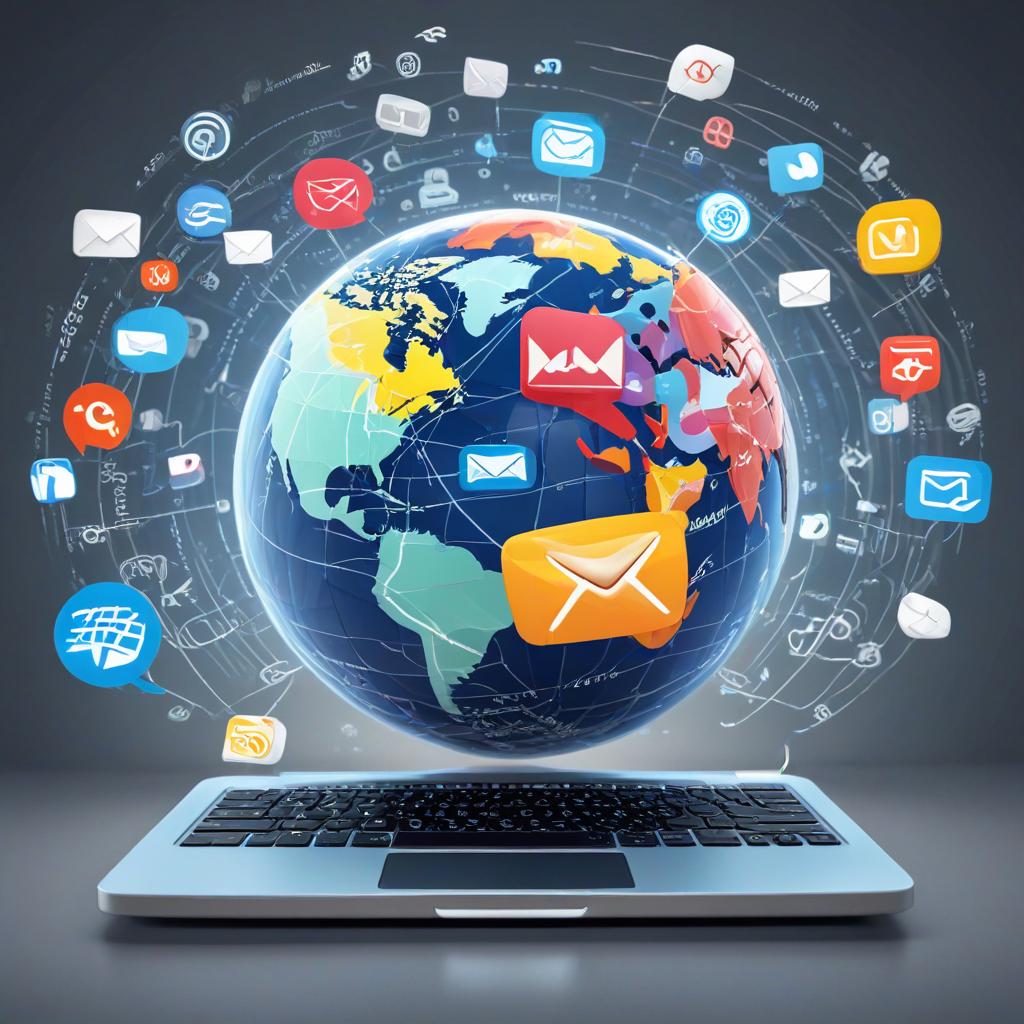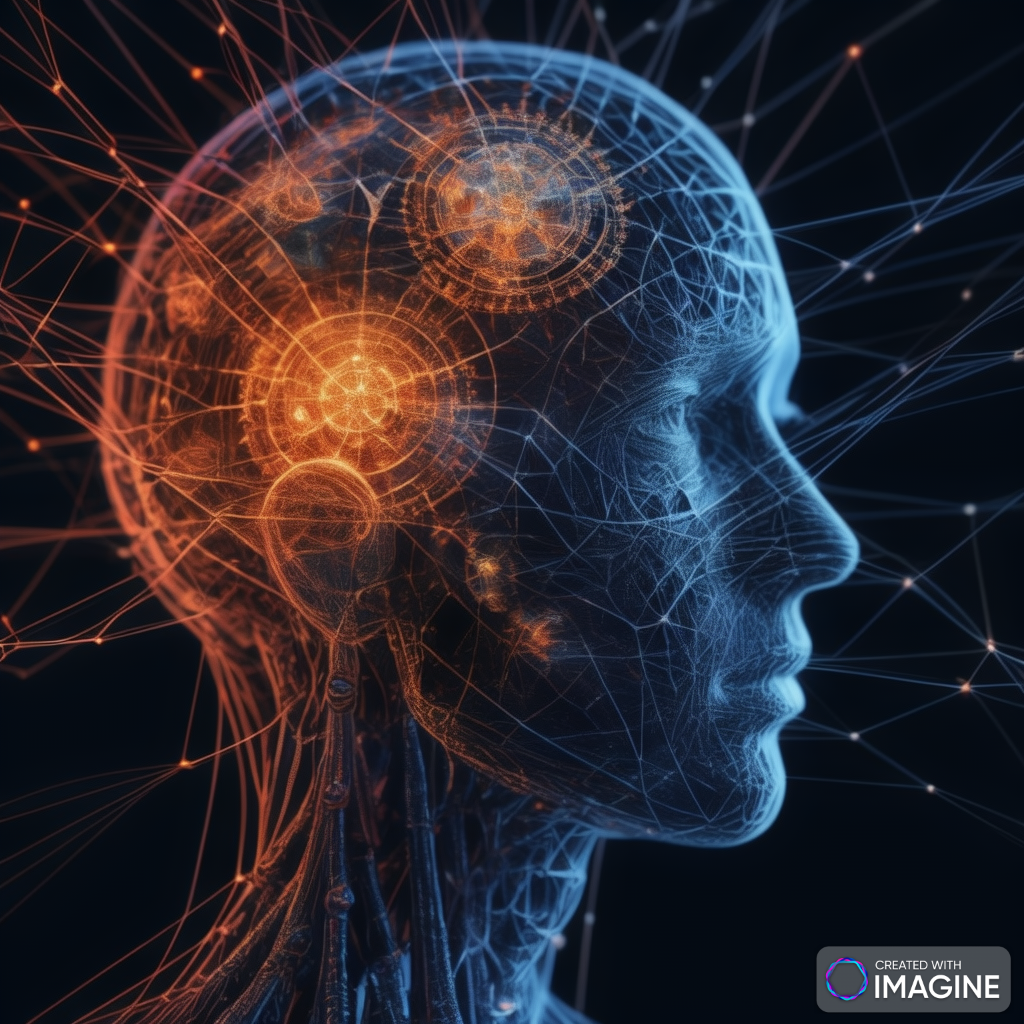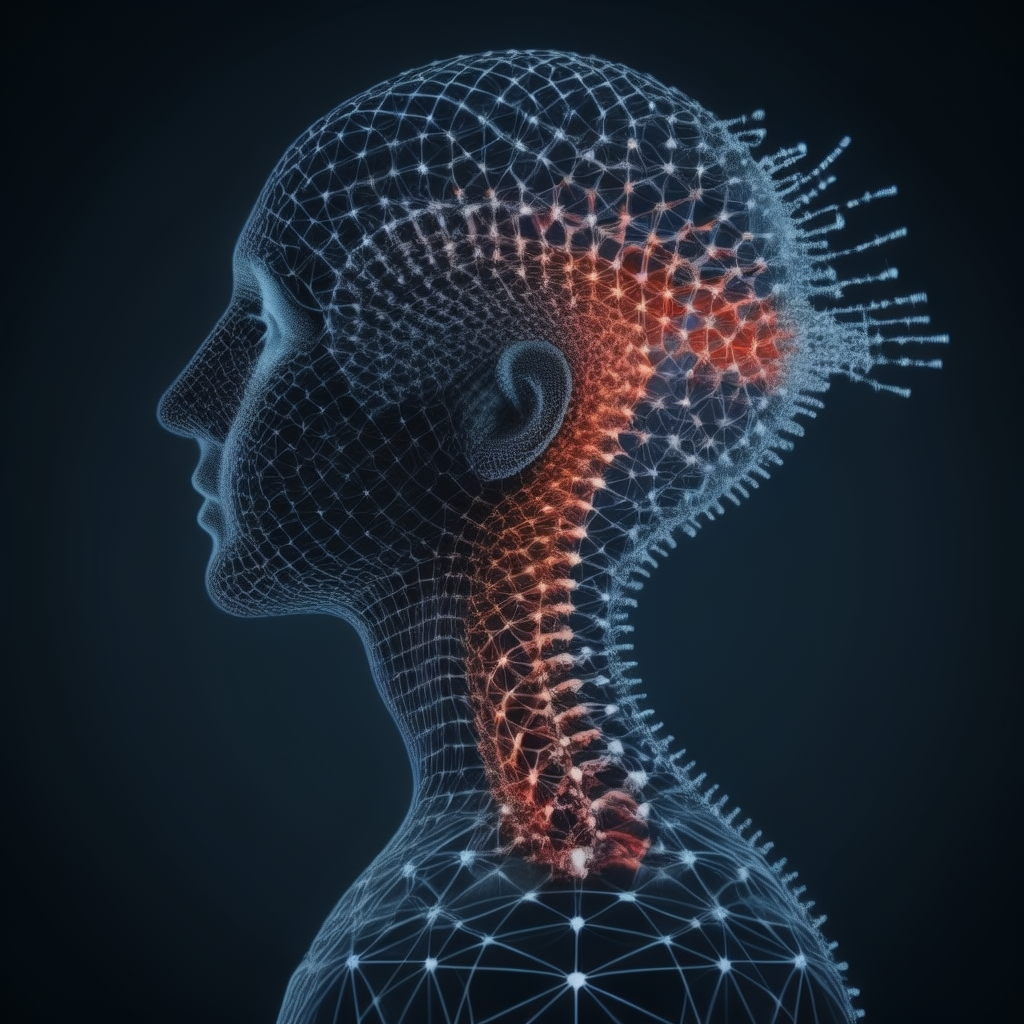The Physics, Science, and Technology Behind Computers, Laptops, and PCs: A Detailed Exploration
Computers, laptops, and personal computers (PCs) have become indispensable tools in modern life. They allow us to perform complex calculations, store vast amounts of information, communicate instantly, and run sophisticated applications. But behind these sleek devices lies a fascinating array of scientific principles, technological innovations, and engineering feats that drive their operation.
In this blog post, we will explore the fundamental physics, science, and technology behind computers, laptops, and PCs—from the subatomic particles that govern their behavior to the innovative software that powers their functionality.
1. The Physics of Computing: Understanding the Fundamentals
At the core of every computing device is a collection of fundamental physical principles that govern how data is processed, stored, and transmitted. These principles operate on multiple levels, from the atomic scale in microchips to the electrical signals flowing through circuits.
1.1. Transistors and Semiconductors
At the heart of any computer is the transistor, the basic building block of modern electronic devices. A transistor is a small semiconductor device that can act as a switch or amplifier. It allows computers to process binary information (1s and 0s) by switching between two states: on (1) and off (0).
- Semiconductors: Transistors are made from semiconductor materials, typically silicon. Semiconductors have electrical properties that can be controlled, allowing them to switch between conducting and insulating states. This property makes them ideal for creating transistors.
- Quantum Physics: The behavior of electrons in semiconductors is governed by the principles of quantum mechanics, particularly quantum tunneling and the wave-particle duality of electrons. These principles explain how transistors can switch states rapidly, enabling high-speed processing.
1.2. Binary Logic and Boolean Algebra
The information in a computer is processed using binary logic, where data is represented as a series of 1s and 0s. This system is based on Boolean algebra, a branch of mathematics that deals with logical operations such as AND, OR, and NOT.
- Logic Gates: Transistors are configured to create logic gates, which perform basic logical operations. Combinations of logic gates allow the computer to perform complex tasks such as arithmetic calculations, decision-making, and data manipulation.
1.3. Electricity and Circuitry
Electrical circuits are essential to the operation of computers, enabling the movement of electrons that carry information. Circuitry provides the pathways through which electrical signals flow.
- Ohm’s Law: Ohm’s law, which states that voltage (V) equals current (I) multiplied by resistance (R), is central to understanding how electrical circuits function in a computer. Designers carefully control the voltage and current flowing through circuits to optimize performance and power consumption.
2. The Science Behind Computer Components
The seamless operation of a computer relies on a variety of key components, each built on scientific principles. Let’s take a look at the primary hardware components and the science that drives them.
2.1. The Central Processing Unit (CPU)
The CPU is often referred to as the “brain” of the computer. It executes instructions and performs calculations. The CPU operates based on principles of parallel processing and pipelines, breaking down tasks into smaller steps and executing them simultaneously.
- Moore’s Law: Over time, CPUs have become more powerful due to the continued shrinking of transistors. Moore’s Law states that the number of transistors on a microchip doubles roughly every two years, leading to exponential growth in computing power.
- Quantum Limitations: As transistors shrink to sizes approaching the atomic scale, quantum effects like quantum tunneling pose challenges for further miniaturization. This has led to research into new materials, architectures (like multi-core processors), and even quantum computing.
2.2. Memory and Storage: RAM and Hard Drives
Memory and storage devices allow a computer to store and retrieve data. Random Access Memory (RAM) is used for temporary storage, while hard drives (or solid-state drives) provide long-term data storage.
- RAM: RAM is typically made of capacitors and transistors that store data as electrical charges. When the power is off, RAM loses its data, which is why it’s considered volatile memory.
- Hard Drives: Traditional hard drives store data on spinning disks coated with magnetic material. Magnetism allows binary data to be encoded as areas of magnetization (1) or demagnetization (0). Solid-State Drives (SSDs) use flash memory, where data is stored in electrical cells, providing faster access times and better durability.
2.3. The Graphics Processing Unit (GPU)
The GPU is designed for rendering images, animations, and videos. Unlike CPUs, GPUs can perform thousands of operations in parallel, making them ideal for handling the large data sets involved in graphics rendering and machine learning tasks.
- Parallel Processing: GPUs leverage massive parallel processing capabilities, performing many tasks simultaneously. This has applications not only in graphics rendering but also in AI, data science, and simulations.
2.4. Input/Output Devices
Devices such as keyboards, mice, monitors, and printers serve as the interface between the user and the computer. These devices rely on physics principles such as electromagnetism (e.g., in printers) and light propagation (in display technologies like LEDs and LCDs).
- Monitors: Monitors display images using pixels, small dots that emit light. Technologies like Liquid Crystal Displays (LCDs) use liquid crystals to control the passage of light, while Light Emitting Diodes (LEDs) emit light when an electric current passes through them.
3. Technological Innovations: The Evolution of Computing
Over the past decades, technological innovations have transformed computers from room-sized machines into portable devices that fit into our pockets. Here are some of the major innovations that made this possible.
3.1. The Integrated Circuit (IC)
The invention of the integrated circuit in the 1950s revolutionized computing by allowing multiple transistors to be fabricated onto a single chip. This innovation reduced the size and cost of computers while improving their performance.
- Miniaturization: Advances in photolithography and nanotechnology allow the placement of billions of transistors on a single chip, which powers today’s high-performance laptops and PCs.
3.2. Operating Systems and Software
While hardware is the foundation of a computer, software makes it usable. Operating systems (OS) like Windows, macOS, and Linux manage hardware resources and provide a user interface to interact with the computer.
- Virtualization: Modern OSs use virtualization to create virtual machines that allow multiple operating systems to run on a single physical machine. This technology is crucial in cloud computing and enterprise IT infrastructure.
3.3. Networking and the Internet
Computers are often connected to networks, allowing data exchange between devices. Networking technologies like Wi-Fi, Ethernet, and fiber-optic communication enable fast data transmission.
- Packet Switching: The internet uses packet switching, where data is broken into small packets that are transmitted independently and reassembled at the destination.
4. Future Trends: Quantum Computing and Beyond
As the limits of classical computing are approached, new paradigms are emerging to push the boundaries of what computers can do.
4.1. Quantum Computing
Quantum computers leverage the principles of quantum mechanics to perform computations in fundamentally different ways. Unlike classical computers, which process data in binary (0 or 1), quantum computers use quantum bits (qubits) that can exist in multiple states simultaneously due to superposition.
- Quantum Speedup: Quantum computers have the potential to solve problems exponentially faster than classical computers. For example, they can simulate complex chemical reactions or solve optimization problems that are currently intractable.
- Quantum Entanglement: Qubits can also be entangled, meaning the state of one qubit is dependent on the state of another, no matter the distance between them. This property is crucial for the power of quantum computing.
4.2. Artificial Intelligence and Machine Learning
Advances in AI and machine learning are transforming how computers operate. AI algorithms enable computers to perform tasks that require human-like intelligence, such as image recognition, natural language processing, and autonomous decision-making.
- Deep Learning: The rise of deep learning has enabled machines to learn from vast amounts of data, improving their performance in tasks like voice assistants, self-driving cars, and diagnostics.
4.3. Neuromorphic Computing
Neuromorphic computing mimics the structure and function of the human brain by using artificial neurons and synapses. This approach could lead to energy-efficient, brain-like computers that excel in tasks such as pattern recognition and sensory data processing.
5. Challenges and Limitations
Despite all these advances, computing technology faces challenges:
- Heat Dissipation: As computers become more powerful, managing the heat generated by millions of transistors becomes critical. Thermal management technologies are evolving to prevent overheating.
- Energy Consumption: The demand for faster, more powerful computers comes with higher energy requirements. Developing energy-efficient chips is a priority for future computing.
- Quantum Challenges: While promising, quantum computing is still in its infancy, with significant challenges in error correction and maintaining qubit coherence over time.
The Fundamentals and Evolution of Computing Technology: From Electromagnetic Waves to Modern Laptops and Smartphones
The evolution of computing technology, from the recognition of electromagnetic (EM) waves to the creation of modern laptops, PCs, and smartphones, is a fascinating journey through multiple scientific disciplines—physics, electrical engineering, communications, and computer science. In this blog post, we will explore the origins of the underlying principles, how these principles were recognized and harnessed, and the scientific, technological, and engineering advances that have led us to the complex devices we use today.
1. Electromagnetic Waves: The Foundation of Modern Communication
The journey begins with the discovery of electromagnetic (EM) waves. These waves are fundamental to wireless communication, a key component of both modern computers and smartphones.
1.1. Discovery of EM Waves
- James Clerk Maxwell (1864) is credited with formulating the theory of electromagnetism, predicting the existence of electromagnetic waves. Maxwell’s equations describe how electric and magnetic fields propagate and interact with each other, forming the foundation for all wireless communications.
- In 1887, Heinrich Hertz experimentally confirmed the existence of EM waves, leading to the development of wireless communication technologies.
1.2. Role of EM Waves in Communication
EM waves, especially radio waves, are crucial in transmitting data between devices like computers, laptops, smartphones, and satellites. Modern wireless networks (Wi-Fi, 5G) rely on EM waves to send and receive signals. EM waves enable:
- Wireless Communication: From Bluetooth to cellular signals, EM waves carry digital information over long distances, enabling internet connectivity, phone calls, and data transmission.
- Satellite Communication: EM waves are essential for GPS and satellite internet services, allowing ride-sharing apps or any GPS-based app on smartphones to function by communicating with satellites in real-time.
2. From Fundamental Physics to Technology: The Journey of Electrical Engineering
Once the existence of EM waves was established, scientists and engineers began harnessing them for practical applications. The discovery and manipulation of electricity and magnetism played a crucial role in developing technologies that power today’s computers and smartphones.
2.1. Electrical Circuits and the Role of Electricity
Electricity, a flow of electrons, powers everything in a computer. When we plug in a laptop or PC, or even when we charge a smartphone, we’re driving electrical currents that perform work at a microscopic level.
- Current and Voltage: When a device is charging, a current flows into the battery, causing chemical reactions inside the battery cells. Electrons are stored, and this stored energy is later used to power the device.
- Transistors as Switches: The transistor, invented by John Bardeen, Walter Brattain, and William Shockley in 1947, acts as an electronic switch. It controls the flow of electricity to encode binary information (0s and 1s), forming the basis of all modern computing.
2.2. The Role of Semiconductors
Semiconductors, like silicon, are materials that can act as both conductors and insulators depending on external conditions like voltage or doping. They enable the design of transistors, diodes, and integrated circuits.
- Microprocessors: Microprocessors are collections of millions or billions of transistors that perform calculations. The Integrated Circuit (IC), developed by Jack Kilby and Robert Noyce, allowed many transistors to be packed onto a single chip, enabling miniaturization and increasing computational power.
3. The Evolution of Data Processing and Binary Logic
Data processing in computers relies on a fundamental understanding of binary logic—the manipulation of 1s and 0s using transistors. This binary information is the basis of how computers perform calculations, process data, and execute instructions.
3.1. Binary Logic and Boolean Algebra
At the core of all computer operations is Boolean algebra, which involves logical operators like AND, OR, and NOT. These operations are performed using logic gates, which are made from transistors. A computer can perform billions of these operations per second.
- Logic Operations: Every time you open an app, such as a ride-sharing app on your smartphone, millions of logical operations happen. Data is processed to display the interface, retrieve your location, connect with servers, and handle inputs.
- Billions of Operations on ICs: Inside an integrated circuit (IC), billions of transistors switch on and off in nanoseconds, executing instructions written in binary code. This enables computations ranging from simple arithmetic to complex AI algorithms.
3.2. How Data is Processed in Computers
Data in computers is processed through a sequence of steps involving fetching, decoding, executing, and storing.
- Fetching: The CPU fetches instructions from memory.
- Decoding: These instructions, written in machine code (binary), are decoded into specific commands that the computer can understand.
- Executing: The CPU executes the decoded instructions, performing arithmetic, logic, or control operations.
- Storing: The results of the operations are stored in memory or sent to output devices like screens.
4. Electricity in Computing Devices: From Power to Operation
Electricity is the lifeblood of all computing devices. It powers the intricate operations inside a computer, laptop, or smartphone, enabling data processing, communication, and display.
4.1. What Happens When You Charge a Device
When you plug in a laptop or smartphone to charge, electrical energy flows into the battery. Inside the battery, chemical reactions convert electrical energy into stored chemical energy. This energy is later released to power the device when it’s unplugged.
- Lithium-Ion Batteries: Most modern laptops and smartphones use lithium-ion batteries. When charging, lithium ions move from the positive electrode (cathode) to the negative electrode (anode), where they are stored. When the device is in use, the ions move back, releasing energy.
4.2. What Happens When a Device Powers Off
When you shut down a laptop or computer:
- Power Cut Off: The electrical circuits inside the device stop receiving power. The transistors switch off, halting all computations and processes.
- Memory: Data stored in RAM (Random Access Memory), which is volatile, is lost when power is cut. However, data stored in permanent storage, like SSDs or HDDs, remains intact.
- Zero Battery Charge: If the battery runs out of charge, the chemical reactions in the battery stop, and the device is no longer able to power its circuits until it’s recharged.
5. How Devices Communicate: Wireless, Satellite, and Optical Communication
Modern laptops, smartphones, and PCs rely on communication networks that span the globe. Whether it’s browsing the internet, using a ride-sharing app, or making a video call, these actions involve a vast web of communication technologies.
5.1. Wireless Communication and Wi-Fi
- Wi-Fi: Wireless communication technologies, like Wi-Fi, rely on radio waves to transmit data between devices. A Wi-Fi router sends and receives radio signals to communicate with your smartphone or laptop, enabling internet access.
- Cellular Networks: Mobile phones communicate with cell towers using radio waves. These towers relay data to centralized servers, which handle tasks like connecting calls or delivering data from the internet.
5.2. Satellite Communication
When you use a GPS-enabled app like a ride-sharing service, your phone communicates with satellites orbiting the Earth. GPS satellites send signals that are received by your phone’s GPS receiver, allowing the app to pinpoint your location.
- Geostationary Satellites: These satellites orbit the Earth at fixed positions and are essential for applications like GPS, satellite internet, and global communications.
5.3. Optical Communication
In addition to radio waves, optical communication plays a critical role in data transmission. Optical fibers, which use light to transmit data, are a backbone of the modern internet.
- Fiber Optics: Data travels as pulses of light through optical fibers. These fibers can carry vast amounts of information over long distances at incredible speeds, making them ideal for high-speed internet connections.
6. The Complexity of Modern Computing Devices: Billions of Operations and Applications
The modern computer, laptop, or smartphone is an extraordinarily complex device that performs billions of operations every second. Here’s what happens behind the scenes:
6.1. Processing and Boolean Operations in Apps
When you open an app like a ride-sharing app on your phone:
- Data Processing: The app processes inputs from the user, retrieves data from the internet, communicates with the GPS, and updates the user interface. All these tasks involve millions of logic operations performed by the device’s processor.
- Boolean Logic: Each button click, location update, or map rendering involves countless Boolean logic operations (AND, OR, NOT). These operations determine what happens next—whether to show a new screen, update the map, or communicate with a server.
6.2. The Role of the Internet
The internet is a network of networks, enabling communication between devices around the world. When you use a web browser or an app on your laptop or phone, data is transmitted across the globe using protocols like HTTP and TCP/IP.
- Servers: When you browse a website, your device sends a request to a web server. The server processes the request and sends back the necessary data, which is displayed in your browser.
7. Early Computational Theories: From Abacus to Mechanical Calculators
Before the age of transistors and integrated circuits, humans devised simpler computational devices, laying the groundwork for modern computing.
7.1. The Abacus and Analog Computing
- Abacus: The earliest computational device, the abacus, was used by ancient civilizations to perform arithmetic operations.
- Mechanical Calculators: In the 17th century, inventors like Blaise Pascal and Gottfried Wilhelm Leibniz created mechanical calculators, such as the Pascaline, which could perform basic arithmetic using gears and wheels.
7.2. Charles Babbage’s Analytical Engine
- Analytical Engine: The conceptual design of the first programmable computer was proposed by Charles Babbage in the 1830s. His Analytical Engine was a mechanical device that introduced the use of punched cards to store instructions, a precursor to modern memory systems.
- Ada Lovelace’s Algorithm: Ada Lovelace, considered the first computer programmer, developed algorithms for Babbage’s machine. Her work marked the beginning of theoretical computer programming.
8. The Role of Quantum Mechanics in Modern Computing
While classical computing relies on transistors, the future of computing is closely tied to quantum mechanics, which governs phenomena at the atomic and subatomic levels.
8.1. Quantum Computing: The Next Frontier
- Superposition and Entanglement: Quantum computers leverage the principles of superposition (where quantum bits or qubits can exist in multiple states simultaneously) and entanglement (where qubits become correlated and can affect each other instantaneously).
- Quantum Gates: Unlike classical logic gates, quantum gates operate on qubits and enable quantum computers to solve problems that are intractable for classical computers, such as complex optimization problems and simulations of molecular structures.
8.2. Practical Implications
- Error Correction: One challenge in quantum computing is developing effective quantum error correction techniques due to the fragile nature of qubit states. Advances in error correction could unlock more practical applications of quantum computers.
- Quantum Cryptography: Quantum mechanics is also foundational to quantum cryptography, which offers a virtually unbreakable method of secure communication using principles like quantum key distribution (QKD).
9. Thermodynamics and Information Theory in Computing
Computing devices are not only bound by electrical engineering but also by the physical limits set by thermodynamics and information theory.
9.1. Thermodynamics and the Limits of Computation
- Landauer’s Principle: In 1961, Rolf Landauer proposed that any logically irreversible computation, such as erasing a bit of information, dissipates a minimum amount of energy as heat. This principle ties computation to thermodynamics and imposes physical limits on the efficiency of computing systems.
- Heat Management: Modern processors generate significant heat as they perform billions of operations per second. Effective thermal management systems, including heat sinks and fans, are necessary to prevent overheating and maintain performance.
9.2. Information Theory
- Shannon’s Information Theory: Claude Shannon’s work in the 1940s laid the groundwork for modern data compression and error correction algorithms. Information theory governs how efficiently data can be encoded, transmitted, and processed, playing a crucial role in both computing and telecommunications.
10. Materials Science: Beyond Silicon
The reliance on silicon in semiconductors is not the end of the story. Materials science plays a crucial role in the development of new computing technologies, offering alternatives that could revolutionize processing power and energy efficiency.
10.1. Graphene and New Semiconductor Materials
- Graphene: A form of carbon arranged in a two-dimensional honeycomb lattice, graphene offers promising electrical properties, such as high conductivity and flexibility. It could potentially replace silicon in transistors, leading to faster, smaller, and more energy-efficient processors.
- Molybdenum Disulfide (MoS₂): Another candidate for post-silicon transistors, MoS₂, has properties that make it suitable for use in flexible and transparent electronics.
10.2. Photonic and Optical Computing
- Photonic Transistors: Traditional transistors use electrical signals to process information, but photonic transistors use light (photons) instead. Optical computing, which uses light instead of electricity, could drastically increase data transmission speeds and reduce heat production.
- Optical Communication on Chips: Researchers are exploring ways to integrate optical interconnects directly onto chips, which could lead to ultra-fast data transfer within processors, revolutionizing how data is processed at a microscopic level.
11. Artificial Intelligence (AI) and Machine Learning in Modern Processors
As the complexity of tasks grows, modern processors are increasingly integrated with specialized hardware to support AI and machine learning (ML) applications.
11.1. Neural Networks and AI Chips
- Neural Processing Units (NPUs): Many modern smartphones and computers come equipped with NPUs, which are specialized processors designed to accelerate neural network calculations, allowing devices to perform tasks like image recognition, speech-to-text, and natural language processing in real-time.
- Machine Learning Accelerators: Companies like Google, NVIDIA, and Apple are developing hardware like Google’s Tensor Processing Unit (TPU) and NVIDIA’s GPUs, optimized for machine learning workloads, enabling faster training and inference for AI models.
11.2. Deep Learning and Data Processing
- Parallelism in Deep Learning: Deep learning models require parallel processing of massive datasets, something traditional CPUs struggle with. Modern processors leverage parallel architectures to speed up tasks like training deep learning models.
- Edge AI: AI processing is increasingly moving to the edge—meaning computations are performed on the device (smartphone, laptop, etc.) rather than in the cloud. This is made possible by advancements in hardware that enable powerful AI models to run locally.
12. The Role of Cryptography in Data Security
In an age of interconnected devices and constant data flow, cryptography plays an essential role in securing information processed by computers, smartphones, and laptops.
12.1. Classical Cryptography
- RSA Encryption: One of the foundational encryption algorithms used in modern computing, RSA relies on the mathematical difficulty of factoring large numbers. It’s used to secure everything from internet traffic (via HTTPS) to secure emails.
- Elliptic Curve Cryptography (ECC): ECC is a more recent development that offers strong encryption with smaller key sizes, making it more efficient and suitable for devices with limited computing power, such as smartphones.
12.2. Quantum Cryptography
- Post-Quantum Cryptography: With the rise of quantum computing, many classical encryption methods may become vulnerable to quantum attacks. Post-quantum cryptography seeks to develop encryption algorithms that remain secure even in the face of quantum computing advancements.
13. The Evolution of Data Storage Technologies
Data storage has come a long way from early punch cards to modern solid-state drives (SSDs), with each advancement providing faster, larger, and more reliable storage solutions.
13.1. Magnetic Storage: Hard Disk Drives (HDDs)
- Magnetic Storage: Hard disk drives (HDDs) store data on spinning magnetic disks, using read/write heads to magnetically encode data. While slower than newer technologies, HDDs remain widely used due to their cost-effectiveness for large-scale data storage.
13.2. Solid-State Drives (SSDs)
- Flash Memory: SSDs use flash memory to store data, offering faster read/write speeds than HDDs. They have no moving parts, making them more durable and energy-efficient.
- NVMe Drives: Non-Volatile Memory Express (NVMe) SSDs leverage the PCIe interface, allowing for ultra-fast data transfer rates, revolutionizing storage speed in modern computers.
14. Energy Efficiency in Modern Computing
As computing demands grow, energy efficiency becomes critical, especially in data centers and mobile devices.
14.1. Power Management in Processors
- Dynamic Voltage and Frequency Scaling (DVFS): Modern processors use DVFS techniques to adjust the voltage and clock speed dynamically based on workload. This helps conserve power during periods of low activity and boosts performance when needed.
- Sleep and Hibernate Modes: Devices are equipped with low-power modes, such as sleep and hibernate, that reduce energy consumption by powering down components when not in use.
14.2. Green Computing Initiatives
- Energy-Efficient Data Centers: Data centers, which house thousands of servers, are adopting energy-efficient practices such as advanced cooling systems, renewable energy sources, and server virtualization to reduce their carbon footprint.
- Low-Power AI Chips: Companies are developing low-power AI chips designed to perform complex AI tasks with minimal energy usage, a crucial advancement for battery-powered devices like smartphones.
Conclusion
From the recognition of electromagnetic waves to the development of modern laptops, computers, and smartphones, the history of computing is a fascinating blend of scientific discovery, engineering ingenuity, and technological advancement. Behind the scenes, devices like laptops and smartphones rely on complex data processing, electrical circuits, and wireless communication technologies. As we continue to innovate, future advancements in quantum computing, AI, and communication will push the boundaries of what our devices can achieve, making computing an even more integral part of our lives.
The science and technology behind computers, laptops, and PCs are rooted in fundamental physics and cutting-edge innovations. From the miniaturization of transistors to the potential of quantum computing, the field of computing is ever-evolving. As we look to the future, advancements in AI, quantum computing, and neuromorphic designs promise to push the boundaries of what computers can achieve, shaping the next era of technological progress.
This exploration covers the essential physics and technology powering computers today, offering insights into the fascinating scientific principles that drive modern computing.






